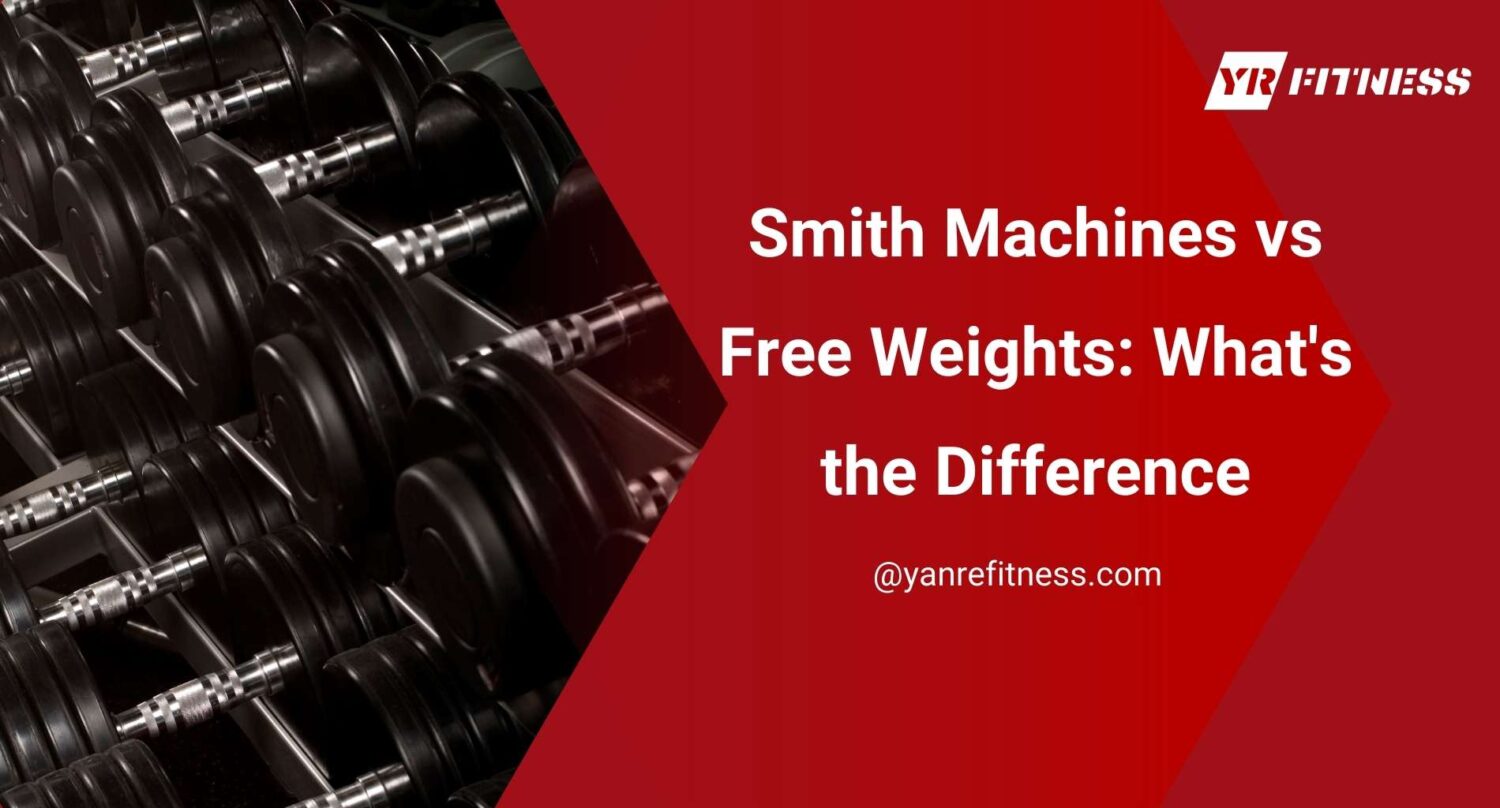When you invest in a piece of strength training equipment, you’re not just buying steel and cables—you’re shaping the identity of your gym.
I’ve made equipment decisions that boosted client satisfaction, and others that gathered dust in the corner. The difference? Understanding how real people use real equipment, day after day.
I have supplied and supported gym owners across the globe. I speak with personal trainers and commercial operators weekly. I know how equipment holds up and what ends up unused.
This article is your insider’s guide to understanding Smith machines vs. free weights from every angle—usability, biomechanics, commercial viability, member appeal, and more.
By the end, you’ll have the confidence to make the right call—for your gym, your trainers, and your clients.
So keep reading!
1. What Are Smith Machines?
Let’s cut the fluff: a Smith machine is a barbell on rails.
It’s built to guide your client’s movement through a fixed vertical—or slightly angled—path. That means more control, less wobble, and often, fewer spotters needed. Sounds good, right?
But here’s the real story.
If you’re deciding whether to invest in one, it’s not just about the mechanics—it’s about how that machine fits your space, your clients, and your vision for the gym.
Different Types of Smith Machines
You’ll see 2 major design differences in the market:
- Vertical track Smith machines (go straight up and down)
- Angled track Smith machines (usually 7–11 degrees, mimicking natural bar movement)
Then there’s counterbalanced vs non-counterbalanced:
- Counterbalanced versions reduce the bar’s starting weight (sometimes to 0 kg), which can help very new clients feel successful.
- Non-counterbalanced are closer to traditional barbell weight—better for strength carryover.
Who Actually Uses Them?
This might surprise you: In most gyms we outfit, the Smith machine ends up being one of the most polarizing pieces of equipment.
Who Loves It:
- Beginners who aren’t ready for the barbell
- Physio clients rehabbing knees, shoulders, hips
- Personal trainers guiding slow, controlled movements
- Bodybuilders isolating specific muscles (especially quads, glutes, or shoulders)
Who Avoids It:
- Powerlifters
- Olympic weightlifters
- CrossFit-style athletes
- Experienced lifters looking for dynamic movement and stability training
In my early days training clients, I used the Smith machine often. It helped a timid new mom do her first squat. It helped a retiree re-learn how to lunge without fear. But for my rugby players? It just didn’t cut it.
That’s the split. Smith machines are tools—not solutions.
Considerations
If you’re even considering a Smith machine, here’s what we’ve learned matters most after years of supplying commercial gyms:
- Smooth rail action
- Sturdy safety catches
- Counterbalance option
- Build quality & finish
- Frame footprint
We’ve worked with everything from compact studio models to top-of-the-line setups from brands like Life Fitness, Technogym, and YR Fitness’s commercial-grade line. Some were phenomenal. Some looked good in catalogs but failed under real member loads.
Trust me—there’s a big difference between “looks premium” and “trains like premium.”
2. What Are Free Weights?
Free weights are the backbone of real strength training, and if you’re debating between them and machines like incline vs decline benches, the principles of natural movement and load control still apply.
Barbells, dumbbells, plates, kettlebells—they’re not flashy, but they work. And more importantly, they build lifters who work.
If you’ve ever watched a new member struggle to rack a barbell and then fall in love with the PR they hit six weeks later—you already know why free weights matter. They build more than muscle. They build confidence, skill, and independence.
Components of a Free Weight Setup
Depending on your layout and budget, free weights can include:
- Barbells (Olympic, powerlifting, EZ curl, trap bars)
- Plates (rubber, bumper, iron—each with pros and cons)
- Dumbbells (rubber hex, round, urethane, adjustable)
- Benches (flat, adjustable, decline)
- Racks (squat stands, half racks, power cages)
It’s a modular system. That means flexibility in how your space works and how your clients train.
Training Difference
This is what separates free weights from machines:
- Natural Movement: Every rep mimics real-world pushing, pulling, squatting, hinging.
- Unrestricted Range of Motion: Your client controls depth, angle, grip.
- Progressive Overload: Easily scalable from beginner to elite athlete.
In my early years coaching, I had a 65-year-old client who refused to touch a barbell. We started with just bodyweight squats, then progressed to goblet squats with a dumbbell.
Eventually—barbell in hand—she deadlifted her bodyweight for reps. No machine could’ve taught her that strength. Free weights did.
Pros & Cons
Here’s where it gets real for you as the decision-maker.
Pros:
- Versatility
- Durability
- Member retention
- Space efficiency (when set up smart)
Cons:
- Higher learning curve
- Potential safety concerns
- Noise & wear
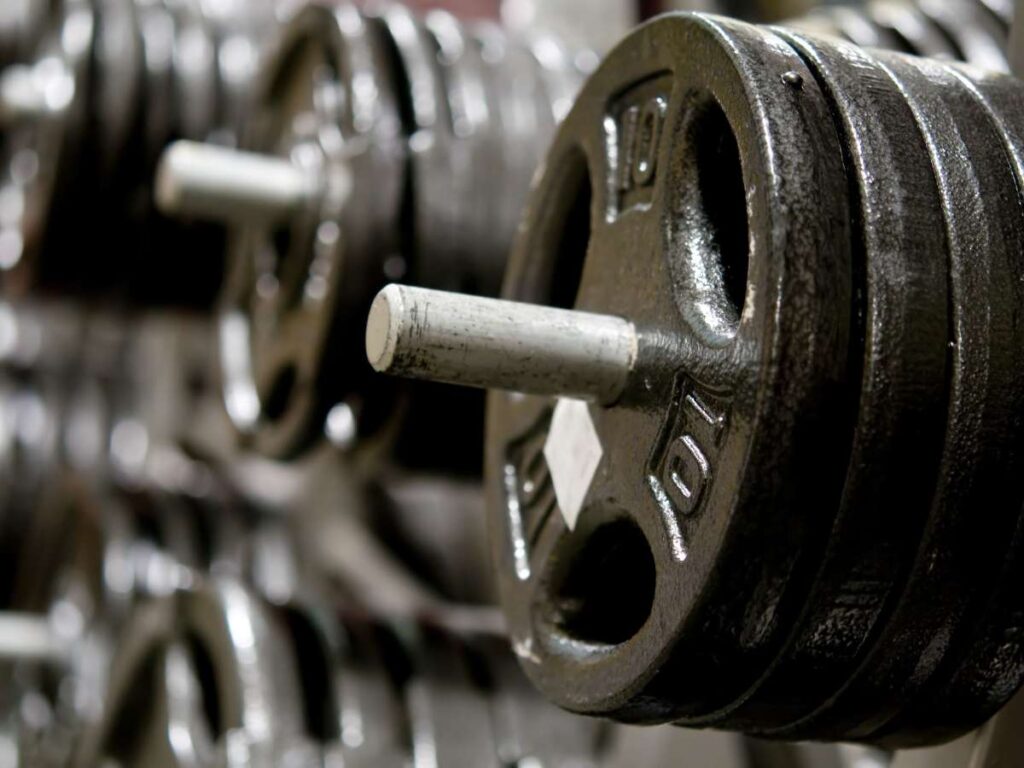
3. Safety and Injury Risk
This isn’t just about equipment—it’s about your reputation.
Because when a client gets injured in your gym, whether it’s on a machine or with a barbell, it doesn’t just hit them. It hits your brand, your reviews, your liability, your trust.
So let’s get honest about Smith machines vs free weights when it comes to real-world safety—and the perception of safety, which can be just as important.
Smith Machines
On paper, Smith machines look like the safer option. And to a certain extent, they are, especially for:
- Solo lifters
- Unsupervised workouts
- Controlled rehab or corrective training
The built-in safety catches and fixed path of YR Fitness’s Smith machines mean your member can bail mid-rep without the bar crashing to the floor or onto their chest. That’s huge for peace of mind, especially in beginner-heavy gyms.
I had a client once, postpartum, early 40s, who was terrified of tipping sideways during a squat. The Smith machine was her safety net until she was ready to go free. It kept her showing up.
But here’s the flip side…
The Catch: False Security
That fixed path? It removes the need to stabilize—something we also covered in Smith machines vs power racks, where bar path restrictions limit training freedom.
Over time, clients can develop poor motor patterns, or worse, feel overconfident when switching to free weights, leading to form breakdowns and injury risks outside of the machine.
We’ve seen gyms where trainers had to “re-teach” squats after clients became too reliant on Smith machines. And if your coaches aren’t proactively addressing that? It can quietly set members up for failure down the line.
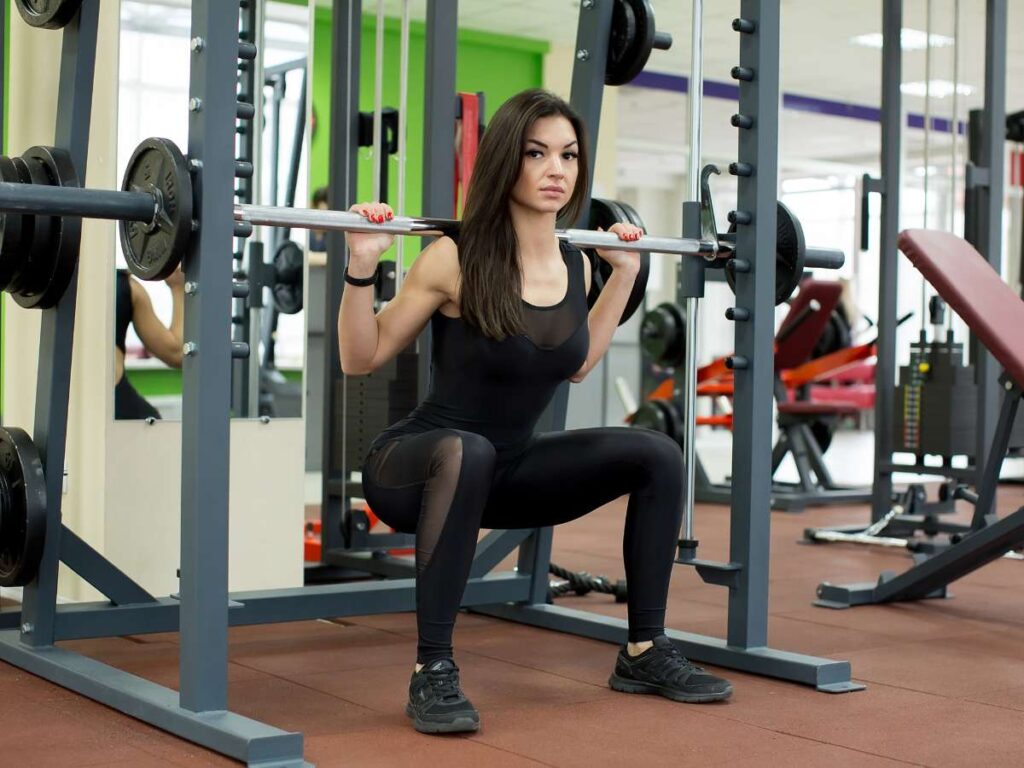
Free Weights
Let’s be real: free weights demand more from the body and the brain.
- More balance
- More coordination
- More focus
That’s why form, coaching, and supervision are so critical. This is where your staff becomes your safety system.
Consideration
No barbell should go unracked until a coach knows a client can handle it. Free weights carry a higher injury risk, especially:
- During unsupervised lifts
- Among new lifters with poor form
- In high-traffic or cramped training areas
But they also teach clients how to move, brace, and lift properly—which pays off in every rep they do, inside and outside the gym.
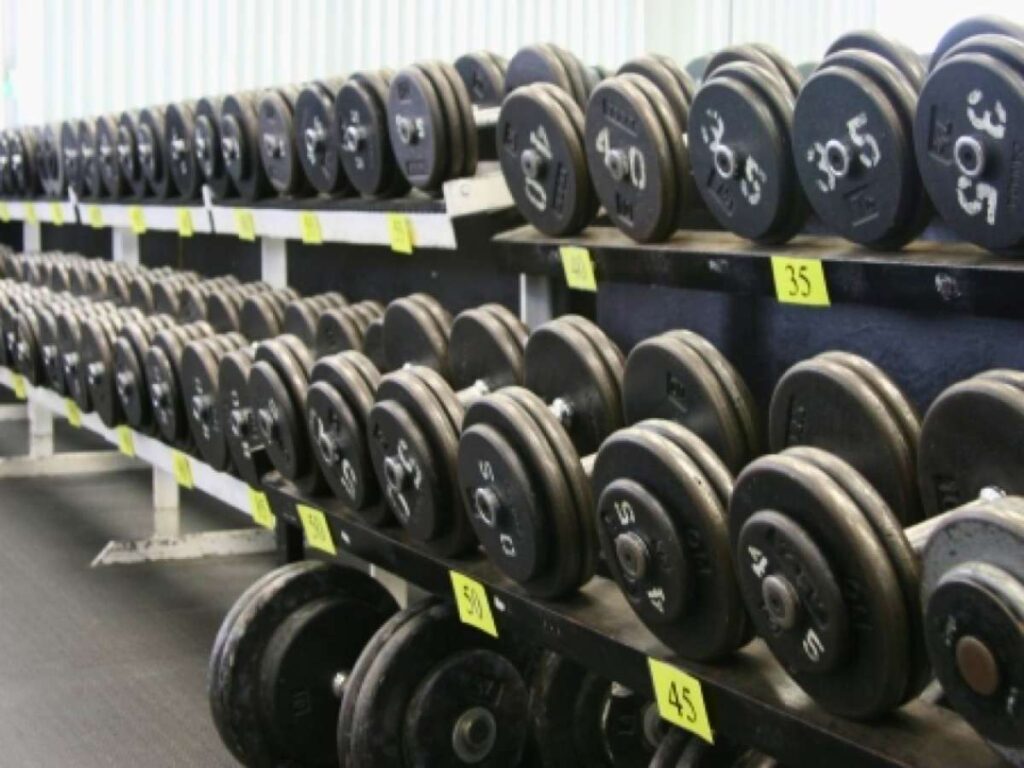
4. Cost, Maintenance, and ROI
Let’s get straight to it: Buying equipment is not just an expense—it’s an investment. And like any smart investment, you want to know:
- What’s the upfront cost?
- How long will it last?
- What’s the return—both in revenue and member satisfaction?
I’ve been on both sides of this—regretting flashy buys that didn’t deliver, and celebrating the workhorses that paid for themselves ten times over. Let’s help you land on the right side.
Category | Smith Machines | Free Weights |
Upfront Cost | $2,000 – $6,000+ (commercial grade) | $3,000 – $10,000+ (complete setup incl. rack, bars, plates) |
Floor Space Needed | ~35–50 sq ft | ~40–75 sq ft (depending on number of stations) |
Installation | Usually plug-and-play; minimal assembly | Requires setup of multiple components (rack, bench, etc.) |
Maintenance Requirements | Medium: Lubricate rails, check bushings, tighten parts | Low: Repaint chips, inspect rack welds, rotate dumbbells |
Durability (Long-Term) | 5–8 years average under heavy use | 10–15 years with proper care |
Versatility | Moderate (limited exercises, fixed path) | High (full-body, scalable, sport-specific) |
Resale/Depreciation | Moderate resale value | High resale potential for quality brands |
User Appeal | High for new clients, moderate for experienced lifters | Very high across all demographics |
Revenue Impact | Useful for PT sessions, basic memberships | Drives serious lifter retention, PT sessions, and social media engagement |
Key Takeaways:
- Smith machines are often a safe starter investment. Great for personal training upsells and rehab-style programming. But over time? Their usage tends to plateau.
- Free weight zones, on the other hand, drive repeat visits, member upgrades, and retention. They become the heartbeat of your strength floor.
At a gym we outfitted in Singapore. The Smith machine sat unused during peak hours while lifters waited for the single squat rack. Within 6 months, the owner doubled their free weight space—and member satisfaction scores shot up.
5. Space & Layout Considerations
You could have the best equipment in the world—but if it clogs your floor, kills traffic flow, or frustrates your members, it becomes a liability. Space is currency in your gym, and how you use it determines how many people you can serve—and how good they feel doing it.
Let’s break down how Smith machines vs free weights measure up when you factor in square footage, accessibility, and real-world usage.
Square Footage
Smith Machines:
- Most commercial models need 35–50 sq ft, including space for the user and plate loading.
- You can tuck them along a wall or in a corner, and they don’t require much breathing room on either side.
Free Weights:
- A power rack alone might only need ~30–40 sq ft.
- But once you add space for barbell clearance, spotting, bench movement, and plate storage, you’re looking at closer to 70–90 sq ft per station.
Traffic Flow & Accessibility
Here’s where we often see well-intentioned layouts go wrong:
- Smith machines get wedged between cardio and strength zones—creating traffic jams.
- Free weight racks are placed too close together—leaving no room for safe spotting or plate changes.
- Dumbbell benches point into walkways.
- Users step over plates because storage wasn’t planned properly.
If you’ve ever had members wait awkwardly for space, or worse—bump into each other mid-set—you know how disruptive this is.
One client told me: “I get more complaints about crowding in the free weight area than I do about broken treadmills.”
That stuck with me. Because it’s not about equipment. It’s about member flow.
Smart Layout Tips
Whether you’re planning a studio, PT room, or full gym floor:
- Anchor Your Layout With Visibility: Put Smith machines or racks where trainers can see from the desk or main floor. It helps spot poor form and keeps the area safe.
- Use Mirrors Strategically: Behind free weight zones = instant perceived space and self-correction for clients.
- Dedicate Plate Storage: Avoid “plate pileup” by integrating vertical trees or wall-mounted storage near the lifting zones.
- Create Breathing Room: Allow at least 3 feet between benches/racks for spotters and bar clearance. If space is tight, consider combo units (squat rack + pull-up bar + storage built in).
- Control the Noise Zone: If you’ve got dropping barbells and Olympic lifts, don’t put your Smith machine next to them. Think sound buffering and member experience.
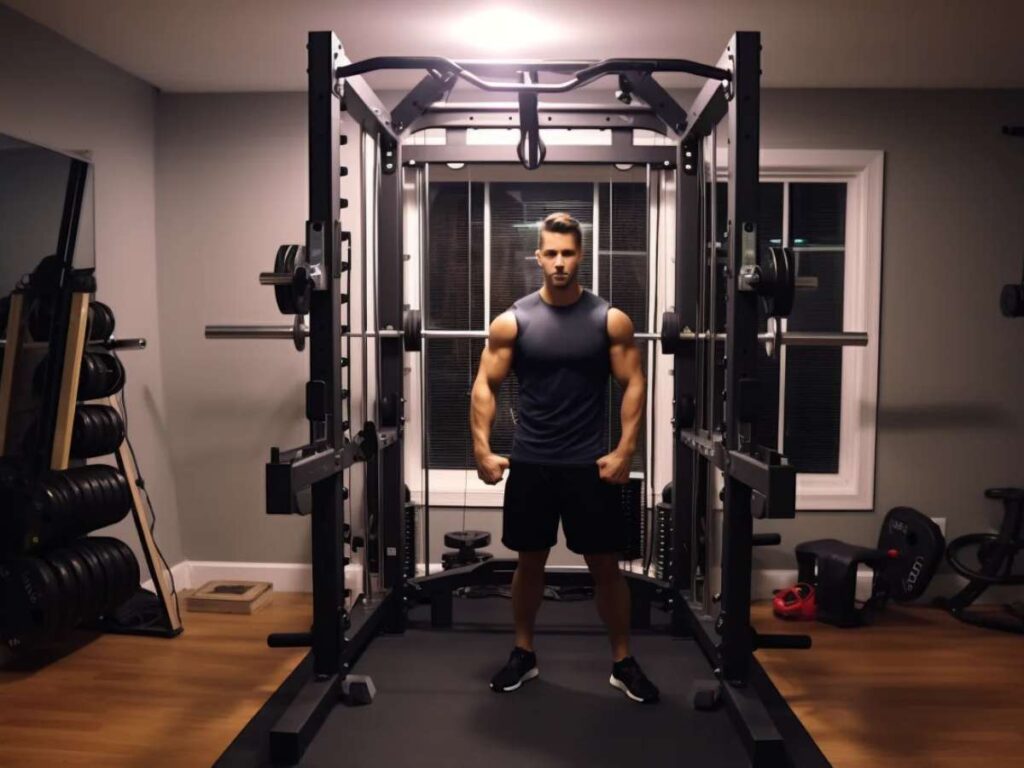
6. Member Demographics & Target Users
Here’s a truth most manufacturers won’t tell you:
The best equipment for your gym isn’t just about the specs—it’s about the people walking through your door.
If you invest in the wrong tools for your demographic, they won’t get used. Or worse, your members will leave to find a gym that “gets” them.
So let’s break down who each type of equipment really serves—and how that should shape your purchasing decisions.
Smith Machines
Smith machines tend to shine with:
Beginners
First-time lifters are often nervous about form, balance, or “doing it wrong.” The guided motion of a Smith machine gives them a confidence boost—and a sense of control. It’s the perfect “training wheels” for squats, presses, and lunges.
I’ve watched members who were terrified of weights rack their first 20kg squat on a Smith machine. That feeling of success? It keeps them coming back.
Seniors and Older Adults
With aging populations looking to stay strong, Smith machines offer the controlled environment needed to load safely without the instability that comes with free weights. Paired with proper programming, they can extend a client’s training life by years.
Clients With Limited Mobility or Rehab Needs
For those recovering from injury or dealing with mobility restrictions, the fixed path and safety catches are game-changers. Trainers love it for controlled movement patterns during early rehab or corrective phases.
Solo Lifters
If your gym has a lot of members training alone, especially in off-peak hours, the Smith machine gives them peace of mind. No spotter needed, no awkward “can you help me?” asks.
Free Weights
Free weights are a magnet for:
Advanced Lifters
Powerlifters, Olympic lifters, strength athletes live in the free weight zone. It’s where real technique, balance, and raw strength get developed. If your gym markets serious lifters, this is non-negotiable.
Athletes
From football players to dancers, athletes need movement that mimics real performance. Free weights force stabilization, coordination, and joint control in a way no machine can replicate.
Bodybuilders & Physique Clients
While machines have their place in hypertrophy programs, serious bodybuilders still rely on barbells and dumbbells for compound lifts. Think: bench press, deadlifts, incline dumbbell press—the big movements that drive real growth.
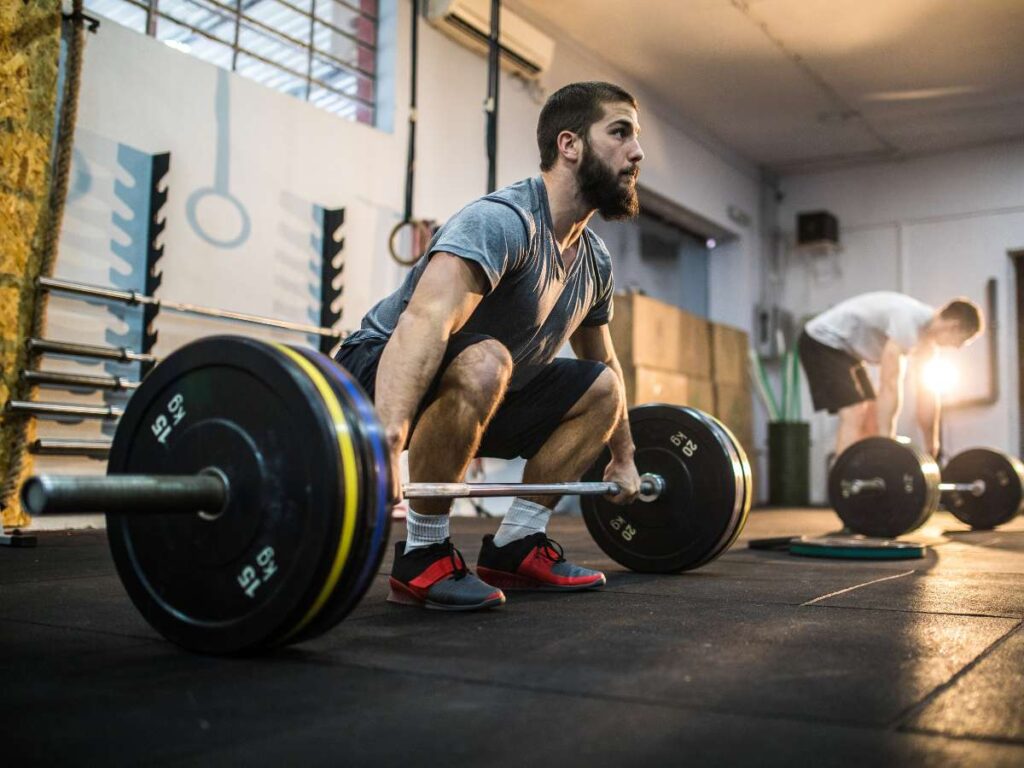
7. When to Choose Smith Machines vs Free Weights?
This is the decision point.
You’ve seen how Smith machines and free weights differ—mechanically, financially, and in terms of user experience. Now, it’s time to answer the big question:
“What’s the right investment for your gym, right now?”
The truth? There’s no one-size-fits-all answer.
But there is a right fit for your members, your space, your staff, and your long-term business goals. Below, we’ll walk you through five key considerations to help you make that call—confidently, profitably, and with your members’ success in mind.
Know Your Core Demographic
Who’s walking through your door? Understanding your member profile is the starting point for any equipment decision.
- If you serve beginners, older adults, or clients with limited mobility, a Smith machine offers safety and confidence.
- If your audience includes athletes, lifters, or performance-focused clients, free weights are essential.
Survey your members or observe usage trends. What equipment gets used most? What’s consistently requested—or ignored?
Understand Your Coaching Capacity
Equipment is only as effective as the support behind it.
- Do you have trainers on the floor regularly correcting form and guiding technique?
- Or is your facility largely self-service outside of scheduled PT sessions?
Smith machines are perfect for lower-supervision environments—they provide a “guardrail” for form and safety. Free weights, meanwhile, demand more coaching, more correction, more hands-on support.
If your staff is stretched thin, or your facility runs on open-gym time, installing too many free weight setups without guidance could lead to frustration—or injuries.
Evaluate Your Space and Layout
You may want both, but can your floor handle it?
- Smith machines are space-efficient and can be placed along walls or in quiet corners.
- Free weight zones require clearance, storage, and safety space—both for lifters and spotters.
If your facility is tight on square footage, your layout has to be hyper-intentional. For smaller gyms or PT studios, a combo Smith machine (with a cable system or rack attachments) might offer the best bang for your buck in a compact footprint.
In larger gyms, we recommend dedicated lifting areas for free weights with intentional traffic flow and visibility. That means planning for:
- Plate storage zones
- Adequate spotting lanes
- Member walkways
Conclusion
Remember that first gym I opened and the Smith machine that looked great but collected dust? I wouldn’t change that mistake. It taught me what this guide just gave you: real-world insight.
Now you know what Smith machines do best, who free weights serve, and how both can impact your space, budget, and brand.
It’s your gym, your community build it intentionally.
Which piece will your members love more?
Contact us today we’ve outfitted gyms like yours and we’re ready to help you choose gear that actually gets used.
Related articles:
